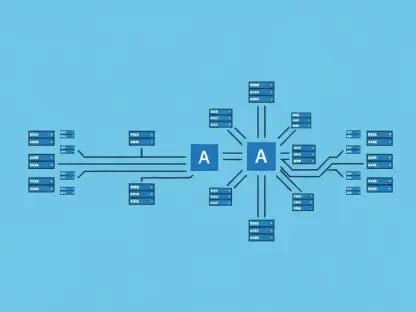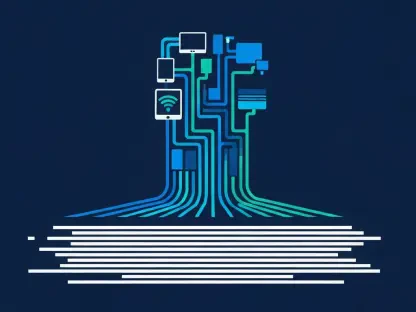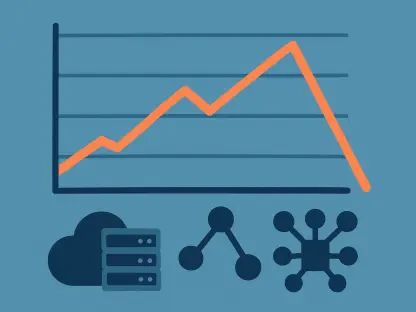Vijay Raina, an expert in enterprise SaaS technology and software architecture, is here to discuss the pressing issue of transitioning from Azure CDN from Edgio to Azure Front Door, following the impending shutdown of Azure CDN from Edgio. With his vast experience, Vijay sheds light on the complexities and solutions surrounding CDN migration, offering invaluable insights into this critical technological transition.
What is the primary reason for migrating from Azure CDN from Edgio to Azure Front Door?
The primary impetus for this migration is the announced shutdown of Azure CDN from Edgio, compelling organizations to take swift actions to prevent potential service disruptions. Azure Front Door offers a seamless transition path, supporting enterprise needs for content delivery, better integration options with DevOps practices, and enhanced security features that align closely with modern cloud environments.
Can you explain the key differences between Azure CDN from Edgio and Azure Front Door?
Azure CDN from Edgio, formerly Verizon, was well-known for distributing both static and dynamic content globally. However, Azure Front Door provides an integrated approach within Microsoft’s ecosystem, offering more robust features such as layer 7 load balancing, SSL offloading, and advanced routing capabilities. Azure Front Door is specifically designed to optimize performance and security for modern applications, making it a desirable option for those looking to leverage a fuller spectrum of Azure services.
How does the shutdown date of Azure CDN from Edgio impact ongoing projects?
The earlier shutdown date, now set for January 7, 2025, accelerates timelines for many ongoing projects, necessitating an immediate reevaluation of strategies to transition without risking service interruptions. This forces development teams to prioritize migration to Azure Front Door to ensure continuity and consistency in application delivery and performance.
What are some of the challenges associated with traditional CDN implementations?
Traditional CDN implementations, like those using Azure CDN from Edgio, often encounter issues such as cache inconsistency, cumbersome manual invalidation procedures, and limited visibility into edge node behaviors. These challenges can lead to performance bottlenecks, security vulnerabilities, and operational inefficiencies that become increasingly untenable in dynamic cloud environments.
How does the proposed remediation architecture address cache inconsistency and manual invalidation procedures?
The remediation architecture automates cache purging and configuration updates, leveraging CI/CD pipelines integrated with tools like Azure DevOps or GitHub Actions. This automation ensures that code changes are immediately propagated across all edge nodes, minimizing the risk of serving stale content to users and supporting zero-downtime deployments.
What role does automation play in the remediation architecture described in the article?
Automation is central to the remediation strategy, as it enables seamless and repeatable deployment processes. By using automated scripts and CI/CD pipelines, teams can update and propagate CDN configurations effortlessly, ensuring consistency and reducing the time spent on manual interventions. This approach also allows for real-time monitoring and adjustments, bolstering both security and performance.
How are security and consistency maintained when deploying CDN configurations?
Security and consistency are ensured by storing CDN configurations as version-controlled files. These are deployed programmatically using API-driven commands with authentication tokens securely managed via Azure Key Vault. This method not only prevents unauthorized changes but also eases compliance monitoring across diverse environments.
In what ways does the architecture integrate CI/CD pipelines with Azure DevOps or GitHub Actions?
CI/CD pipelines play a key role by automating deployments and CDN configuration updates. They facilitate seamless integration of Edgio’s API with Azure CDN configurations, managing application deployments and triggering cache purges based on code changes. This ensures that any updates are instantly reflected across the network, reducing dependency on manual inputs.
How is secure automation and observability achieved in the proposed architecture?
Secure automation is achieved through API-driven commands and token-based authentication stored in Azure Key Vault. Observability is enhanced by integrating Edgio’s real-time logging capabilities with Azure Monitor or Log Analytics, providing comprehensive insights into performance metrics and allowing teams to preemptively address any network issues.
How do cache invalidation commands contribute to zero-downtime deployments?
Cache invalidation commands are deployed immediately post-deployment, ensuring that all edge nodes reflect the latest application state without serving outdated content. This mechanism is crucial for maintaining user experience consistency and enables application changes without necessitating downtime, thus supporting continuous deployment efforts.
What is the importance of integrating Edgio’s real-time logs into Azure Monitor or Log Analytics?
Integrating real-time logs offers invaluable situational awareness by allowing teams to visualize metrics such as cache hit ratios, latency, and error rates. This enhanced observability supports early detection and remediation of performance or security issues, ensuring sustained application reliability and end-user satisfaction.
How does the remediation architecture ensure compliance and consistency across different environments?
By defining security policies and TLS configurations as code, and enforcing them using automated scripts across development, QA, and production stages, the architecture maintains consistency and ensures adherence to compliance standards. Integration with Azure Policy adds another layer of oversight, flagging any deviations from preset parameters.
What advanced rollout strategies are supported by this remediation architecture?
The architecture supports progressive delivery approaches like blue-green and canary deployments, allowing for controlled feature rollouts and testing. Such strategies provide a safety net for validating application updates in segmented environments before a full release, mitigating risks and ensuring service stability.
What are the critical components of the proposed remediation architecture?
The architecture hinges on Azure Front Door, Azure DevOps or GitHub Actions for pipeline management, Edgio APIs for configuration control, and Azure Key Vault for secure token storage. Optionally, Azure Application Gateway or API Management can enhance security layers and facilitate API-driven operations across distributed environments.
How does the Azure SDK for Python facilitate the transition from Azure CDN from Edgio to Azure Front Door?
The Azure SDK for Python automates the setup and configuration of Azure Front Door profiles, streamlining tasks such as creating frontend endpoints and backend pools. It facilitates quick replication of existing setups onto the new platform, reducing complexity and time-to-deployment during the transition phase.
What steps are involved in setting up Azure Front Door for different projects?
Setting up Azure Front Door involves creating dedicated profiles, defining frontend and backend configurations, and establishing routing rules for each project. This process often requires domain verification, security measure implementations such as HTTPS, and integration with existing CI/CD pipelines to automate deployments.
How do DNS cache update times affect the migration process?
DNS cache update times, which range from 60 seconds to 60 minutes, can temporarily affect content accessibility as changes propagate through the network. Planning for these latencies is critical to synchronize updates, ensuring minimal disruption during domain name resolution and service availability validation.
What role does the Operations team play in the migration process?
The Operations team plays an instrumental role in executing scripts, validating configurations, and ensuring that setup aligns with best practices. Post-migration, they are tasked with monitoring ongoing performance and effectiveness, providing feedback for continuous improvement and addressing any emergent issues promptly.
What are the steps for verifying the setup of Azure Front Door?
Verification involves checking that domain configurations are correct, ensuring that frontend endpoints align with project requirements, and confirming routing rules are functioning as expected. It also includes testing secure connections via HTTPS and monitoring for any DNS or latency issues to assure the setup’s reliability.
How does enabling HTTPS enhance the security of custom domains in Azure Front Door?
Enabling HTTPS protects data in transit by encrypting communications between clients and the CDN edge nodes. Azure Front Door allows the use of managed certificates or custom certificates, maintaining secure connections and safeguarding sensitive information from unauthorized access or interception during communications.
What are the necessary steps for the development teams to update their project configuration and pipelines?
Development teams must update project configurations to reflect new domain setups and revise CI/CD pipelines to include steps for Azure Front Door deployments. This involves adjusting URLs, deploying necessary resources, and utilizing automation tools to streamline and validate the process, ensuring consistent application behavior.
How does automating Azure Front Door configurations streamline deployments?
Automating configurations ensures that updates are consistent and less error-prone, eliminating manual bottlenecks and accelerating deployment frequencies. It reduces the overhead associated with frequent configuration changes, allowing teams to focus on innovation and rapid feature delivery within a secure, controlled framework.
Why is it important to monitor DNS configurations, certificate renewals, and pipeline execution results regularly after migration?
Regular monitoring ensures that all components remain operational and secure post-migration. DNS configurations need checking to detect resolution failures, certificate renewals must be tracked to prevent expirations, and pipeline executions should be reviewed to ensure successful, error-free deployments, maintaining overall system integrity.
Do you have any advice for our readers?
Stay proactive and adapt to technological shifts by prioritizing automation and observability in cloud operations. These elements not only enhance performance and security but also ensure your infrastructure evolves smoothly with changing landscapes. Continuous learning and strategic planning are key to harnessing the full potential of cloud architectures.









